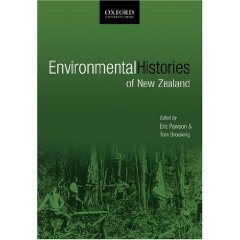Land, Culture and History Interwoven
‘Māori history’ can be defined in many different ways – it depends on which historian you are talking to, and whether that historian is Māori or not.
 In this book, Huia Histories of Māori. Ngā Tāhuhu Kōrero, Danny Keenan has written an Introduction entitled ‘Land, Culture and History Interwoven’ (Huia Publishers, Wellington, 2012, pp. xviii-xl). In this introduction, Danny discusses different aspects and forms of ‘Māori history’, as seen in recent scholarship by Māori writers. He then sets these frames of reference against the histories of Māori and our country, as canvassed in the book by the featured seventeen Māori scholars, including Sir Eddie Durie, Sir Mason Durie, Hana O’Regan, Rawiri Taonui, Brad Haami, Buddy Mikaere, Te Maire Tau, Te Urikore Biddle and Margaret Mutu.
In this book, Huia Histories of Māori. Ngā Tāhuhu Kōrero, Danny Keenan has written an Introduction entitled ‘Land, Culture and History Interwoven’ (Huia Publishers, Wellington, 2012, pp. xviii-xl). In this introduction, Danny discusses different aspects and forms of ‘Māori history’, as seen in recent scholarship by Māori writers. He then sets these frames of reference against the histories of Māori and our country, as canvassed in the book by the featured seventeen Māori scholars, including Sir Eddie Durie, Sir Mason Durie, Hana O’Regan, Rawiri Taonui, Brad Haami, Buddy Mikaere, Te Maire Tau, Te Urikore Biddle and Margaret Mutu.
Another chapter on the nature of Māori history by Danny appears in this book Fragments. New Zealand Social and Cultural History, (eds) Bronwyn Labrum and Bronwyn Dalley (Auckland University Press, Auckland, 2000). The chapter is entitled ‘Mā Pango, Mā Whero Ka Oti. Unities and Fragments in Māori History’ (pp. 38-53) and argues that ‘Māori history’ is essentially (though not exclusively) framed by notions of customary lore and is centered upon iwi (the tribe) or hapu (the sub-tribe).
So, for example, whakapapa (genealogy) is an important customary framing device used by Māori when thinking about their past. You can read this chapter by clicking here – Mā Pango Mā Whero Ka Oti.
Framing devices of Māori history
Māori history is – or can be – framed by such customary devices as whakapapa, waiata or tauparapara. In other words, Māori history takes its shape from long-embedded cultural forms of remembering, especially as we see this represented on stage, in the expressional culture of Māori.
 Land is also an important frame of reference through which Māori might view the past, especially by looking at what happened on the land, such as warfare. Some years ago, Danny wrote a chapter in Environmental Histories of New Zealand edited by Eric Pawson and Tom Brooking in 2002 arguing how Māori views of the past (ie history) were inextricably ‘bound to the land’.
Land is also an important frame of reference through which Māori might view the past, especially by looking at what happened on the land, such as warfare. Some years ago, Danny wrote a chapter in Environmental Histories of New Zealand edited by Eric Pawson and Tom Brooking in 2002 arguing how Māori views of the past (ie history) were inextricably ‘bound to the land’.
In order to illustrate this point, Danny anchored his arguments, so to speak, in the Māori customary estate of his home area, which is Taranaki. The chapter is entitled ‘Bound to the Land. Māori retention and assertion of land and identity’ (pp. 246-260.
